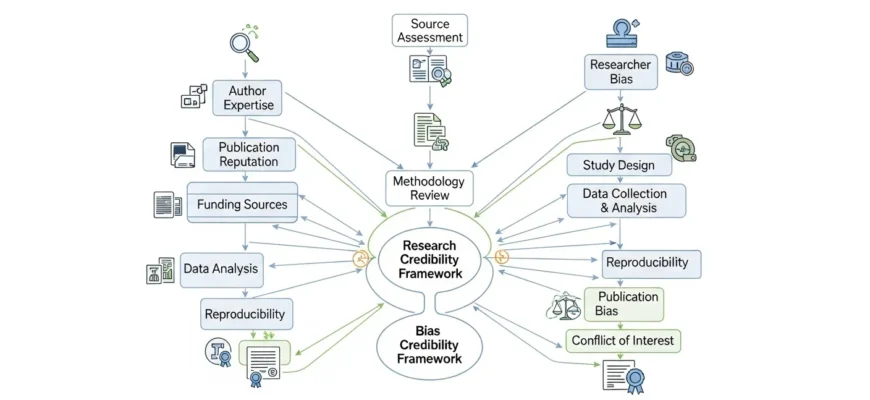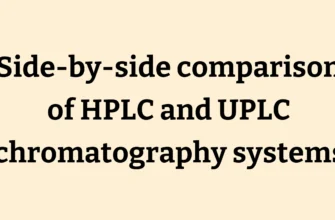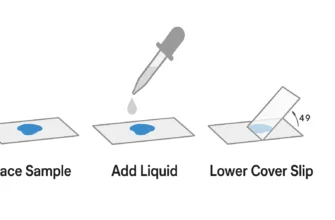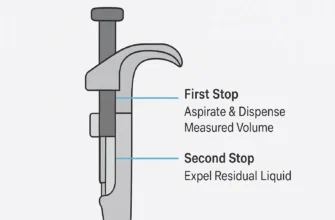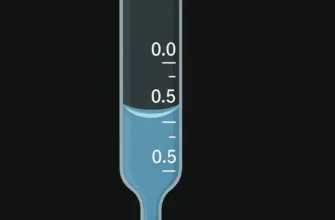Navigating the Ocean of Scientific Information: A Comprehensive Framework for Evaluating Scientific Research
In today’s interconnected world, the proliferation of scientific information presents both unprecedented opportunities and significant challenges. The community of knowledge has expanded beyond traditional academic boundaries, with scientific claims flooding social media platforms, online health topics, and popular press outlets. While public confidence in scientists remains relatively stable, with 76% of Americans expressing trust in them to act in the public’s best interests, navigating this complex landscape of scientific research requires sophisticated evaluation skills that extend far beyond casual consumption of headlines.
The Modern Challenge: Science Education in an Age of Misinformation
The digital transformation has fundamentally altered how scientific knowledge reaches the public, creating what experts term an “infodemic”—an overwhelming flood of information that includes both credible scientific research and harmful scientific misinformation. Recent studies indicate that 59% of Canadians report being very or extremely concerned about misinformation online, highlighting the urgent need for improved science communication and critical evaluation frameworks.
Scientific misinformation represents information that asserts or implies claims inconsistent with the weight of accepted scientific evidence at the time. This phenomenon poses threats at individual, community, and societal levels, potentially leading to misbeliefs that impede informed personal and community decisions, particularly in health topics and responses to public health crises. The COVID-19 pandemic starkly illustrated these consequences, with misinformation about vaccines contributing to an estimated minimum of 232,000 preventable deaths among unvaccinated adults from May 2021 to September 2022.
Understanding the Foundation: Essential Principles for Critical Evaluation
Before examining specific scientific studies or journal articles, establishing a solid foundation in the scientific method and its core principles becomes essential for meaningful evaluation of scientific research. This framework enables readers to understand not just what researchers are claiming, but how they arrived at their scientific explanations and the reliability of their conclusions.
The Scientific Method: A Systematic Approach to Knowledge
At its core, the scientific method represents a systematic process for understanding the world through empirical study and rigorous methodology. Scientific research begins with careful observation, leading to focused research questions that drive hypothesis formation—testable, educated predictions that can be evaluated through controlled experimentation and data collection.
This iterative process builds scientific knowledge incrementally, with each study contributing to a larger body of evidence rather than providing definitive answers in isolation. Understanding this cumulative nature of scientific knowledge helps explain why single studies rarely revolutionize entire fields, and why scientific consensus emerges through repeated validation across multiple research institutions and organizational settings.
Core Concepts: Internal Validity and Reliability in Research Design
Two fundamental concepts underpin all credible scientific research: internal validity and reliability. Internal validity refers to the degree to which a study accurately measures what it claims to investigate, ensuring that observed effects genuinely result from the tested variables rather than confounding factors or bias and confounding influences.
Reliability encompasses the consistency and reproducibility of research findings—a critical component that allows other researchers to replicate studies and validate results across different organizational settings and research processes. Cronbach’s alpha, a statistical measure commonly reported in behavioral and social science research, quantifies the internal consistency of measurement instruments used in empirical studies.
Connecting Scientific Research to Real-World Applications
The ultimate value of scientific research lies in its practical application to real-world problems and decision-making contexts. Understanding the limitations, scope, and broader context of individual studies enables informed translation of abstract findings into meaningful insights for health topics, policy decisions, and personal choices. This translation process requires careful consideration of both the strength of the evidence and its applicability to specific situations and populations.
Finding Credible Sources: Navigating the Hierarchy of Scientific Evidence
The quality and reliability of scientific information depends fundamentally on its source, making source evaluation the critical first step in any scientific evaluation framework. Understanding the hierarchy of evidence and recognizing trustworthy publication venues enables more effective identification of credible scientific research while avoiding the pitfalls of predatory publishing and pseudoscience.
Prioritizing Peer-Reviewed Journals and the Peer Review Process
The peer review process represents the gold standard for scientific communication, providing essential quality control through rigorous evaluation by independent experts in relevant fields. This systematic review of manuscripts before publication involves detailed scrutiny for methodological flaws, logical inconsistencies, and unsubstantiated conclusions, creating a critical filter that improves the overall quality of published research.
Recent research examining the effectiveness of the peer review process indicates that while imperfect, peer review successfully identifies many significant methodological issues and enhances manuscript quality. Studies show that structured peer review approaches, where reviewers address specific questions about methodology and conclusions, improve agreement between reviewers and focus attention on critical aspects of research design. However, the peer review process faces challenges, including increasing delays (averaging 12-14 weeks in medical and natural science journals), difficulty finding qualified reviewers, and variable effectiveness in detecting errors.
Understanding Journal Rankings and Impact Factor Systems
Scientific journals exist within a complex hierarchy of prestige and influence, typically measured through impact factor calculations and citation analysis. The impact factor represents the average number of citations received by articles published in a journal during the two preceding years, providing a quantitative measure of a journal’s influence within its field.
The most prestigious scientific journals maintain exceptionally high impact factors, with Nature (impact factor: 467), The New England Journal of Medicine (impact factor: 439), and Science (impact factor: 424) leading global rankings. However, impact factor alone shouldn’t determine source credibility, as different fields have varying citation patterns, and newer journals may not yet reflect their true influence.
Recognizing Authoritative Research Institutions and Organizations
Credible scientific research typically originates from established research institutions with proven track records of academic excellence and research integrity. Universities such as Harvard University Press, Indiana University, Cornell University, New Mexico State University, and University of Berkeley represent examples of institutions with rigorous research standards and international recognition.
Government agencies, including the National Academies and various national health institutes, provide authoritative scientific information backed by extensive peer review and expert consensus. International organizations, such as those working under the European Union Intellectual Property Office, contribute valuable research across STEM disciplines while maintaining high methodological standards.
Avoiding the Digital Wild West: Social Media and Popular Press Pitfalls
While social media platforms serve as primary news sources for many individuals, they present significant risks for scientific misinformation. Global surveys indicate that trust in social media information (50%) remains significantly lower than traditional media sources, reflecting widespread recognition of these platforms’ vulnerability to inaccurate or misleading content.
Science communication through popular press can provide valuable introductory information, but readers should always trace claims back to original scientific sources. Quality science journalism typically links directly to peer-reviewed publications, enabling readers to evaluate primary sources themselves rather than relying solely on journalistic interpretation.
Evaluating Source Credibility: The CRAAP Test Framework
The CRAAP test provides a systematic framework for evaluating information source reliability, particularly valuable when assessing scientific research and health topics. Developed by Sarah Blakeslee at California State University, Chico, this acronym stands for Currency, Relevance, Authority, Accuracy, and Purpose, offering a comprehensive checklist for source evaluation.
Currency: Evaluating Timeliness and Updates
Scientific research builds upon previous work, making currency a critical factor in source evaluation. Recent publication dates generally indicate more current information, though some foundational research remains relevant across decades. Evaluating currency involves examining publication dates, revision history, and whether information reflects current scientific consensus in rapidly evolving fields.
For health topics and emerging research areas, currency becomes particularly important as new discoveries may substantially alter understanding and recommendations. However, in established fields with stable findings, older high-quality research may retain significant value.
Relevance: Matching Sources to Research Questions
Relevance assessment determines whether a source appropriately addresses the specific research question under investigation. This evaluation considers the scope of coverage, target audience, and applicability to the intended use. Scientific sources should provide sufficient depth and appropriate complexity for the research question while maintaining accessibility for the intended readership.
Authority: Assessing Author Credentials and Expertise
Authority evaluation examines the qualifications and expertise of authors and publishing organizations. This includes reviewing biographical information, institutional affiliations, publication records, and recognition within relevant scientific fields. Credible scientific authors typically hold appropriate academic credentials, maintain affiliations with respected research institutions, and demonstrate expertise through previous scholarly work.
Expert authority in specialized fields may be indicated by recognition such as Nobel Prize awards, fellowship in recognized scientific bodies, or leadership positions in professional organizations. However, authority should be field-specific—expertise in one area doesn’t automatically confer credibility in unrelated disciplines.
Accuracy: Verifying Information and Detecting Bias
Accuracy assessment involves cross-referencing information with other credible sources, examining supporting evidence, and evaluating potential bias and confounding factors. This process includes checking citations, reviewing methodology for empirical studies, and assessing whether conclusions logically follow from presented evidence.
Scientific accuracy requires particular attention to statistical claims, sample size adequacy, and appropriate use of control groups in experimental designs. Readers should also evaluate whether authors appropriately acknowledge limitations and conflicting evidence.
Purpose: Understanding Intent and Potential Conflicts of Interest
Purpose evaluation examines why information was created and whether potential conflicts of interest might influence content. Scientific research may serve various purposes, from advancing knowledge to supporting particular policy positions or commercial interests. Understanding these motivations helps readers evaluate information critically.
Conflict of interest disclosures in peer-reviewed journals provide transparency about potential financial or professional relationships that might influence research. While conflicts don’t automatically invalidate research, they provide important context for interpretation.
Understanding Research Design: The Foundation of Scientific Studies
The strength and reliability of scientific conclusions depend entirely on the quality of underlying research design and methodology. Different research questions require different study approaches, and understanding these distinctions enables more effective evaluation of scientific claims and their limitations.
Research Questions and Hypothesis Formation
Well-designed studies begin with clear, focused research questions that address specific gaps in scientific knowledge. These questions should be answerable through empirical investigation and lead to testable hypotheses that make specific predictions about expected outcomes. Evaluating whether studies address their stated research questions helps determine the relevance and value of their findings.
Understanding Study Types and Their Applications
Different research designs provide varying levels of evidence for cause-effect relationships:
Randomized Controlled Trials (RCTs) represent the gold standard for establishing causal relationships, particularly in medical research and intervention studies. These studies randomly assign participants to treatment and control groups, minimizing bias and enabling strong inferences about treatment effects.
Cohort Studies follow groups of individuals over time to examine relationships between exposures and outcomes. While unable to prove causation definitively, well-designed cohort studies provide valuable evidence about associations and temporal relationships.
Case-Control Studies compare individuals with specific conditions to matched controls, offering efficient investigation of rare conditions or outcomes. These studies excel at identifying risk factors but face limitations in establishing temporal sequences and avoiding selection bias.
Cochrane Reviews represent systematic reviews following rigorous methodology established by the Cochrane Collaboration. These reviews synthesize evidence from multiple high-quality studies, providing comprehensive evaluation of intervention effectiveness with standardized quality assessment procedures.
Critical Elements of Quality Research Design
Several key factors distinguish high-quality research from weaker studies:
Sample Size directly affects the reliability and generalizability of research findings. Larger samples generally provide more precise estimates and greater statistical power, though appropriate sample sizes vary by research design and effect sizes being investigated.
Control Group implementation allows researchers to isolate the effects of specific interventions or exposures. Without appropriate controls, studies cannot distinguish intervention effects from natural variation or confounding influences.
Bias Minimization through randomization, blinding, and appropriate statistical analysis helps ensure that observed effects reflect true relationships rather than systematic errors. Understanding potential sources of bias enables better evaluation of study validity.
The IMRAD Format: Standard Structure for Scientific Communication
Most scientific papers follow the IMRAD format (Introduction, Methods, Results, and Discussion), providing standardized organization that facilitates critical evaluation. This structure enables readers to systematically assess different aspects of research quality and validity:
-
Introduction sections establish background context and research questions
-
Methods sections detail research procedures enabling evaluation of study quality
-
Results sections present findings without interpretation
-
Discussion sections interpret results and acknowledge limitations
Interpreting Findings: Understanding What Results Really Mean
Beyond understanding research methods, critical evaluation requires careful interpretation of results and their implications. This process involves examining statistical analyses, assessing the magnitude and practical significance of findings, and evaluating whether conclusions appropriately reflect the strength of available evidence.
Analyzing Data Presentation and Statistical Claims
Statistical analysis provides the foundation for most scientific conclusions, but proper interpretation requires understanding both statistical significance and practical significance. Statistical significance indicates that observed differences are unlikely to result from random chance alone, while practical significance addresses whether differences are large enough to matter in real-world contexts.
Effect sizes provide crucial information about the magnitude of observed relationships, complementing significance tests that merely indicate whether relationships exist. Large sample sizes can detect statistically significant differences that have minimal practical importance, while small samples may fail to detect meaningful differences due to limited statistical power.
Evaluating Scientific Consensus and Conflicting Evidence
Individual studies rarely provide definitive answers to complex scientific questions. Scientific consensus emerges through replication across multiple studies, research settings, and populations. Understanding this process helps readers avoid overinterpreting single studies while recognizing when evidence consistently supports particular conclusions.
Conflicting evidence often reflects legitimate scientific uncertainty, methodological differences, or population variations rather than fundamental flaws in the research process. Meta-analyses and systematic reviews provide valuable synthesis of evidence from multiple studies, offering more comprehensive evaluation than individual research articles.
Understanding Limitations and Generalizability
All research faces limitations that affect the interpretation and application of findings. Common limitations include sample characteristics that may not represent broader populations, measurement challenges that affect accuracy, and ethical constraints that limit experimental designs.
Generalizability refers to the extent to which research findings apply to different populations, settings, or conditions beyond those directly studied. Factors affecting generalizability include participant demographics, organizational settings, and cultural contexts that may influence how interventions or relationships function in different environments.
Advanced Evaluation: Recognizing Manipulation and Misinformation
Sophisticated evaluation skills require recognition of common tactics used to misrepresent or manipulate scientific information. These tactics may appear in both intentional misinformation campaigns and unintentional misinterpretation of legitimate research.
Identifying Emotional Language and Pseudoscientific Claims
Legitimate scientific communication maintains objective, measured language that acknowledges uncertainty and limitations. Be cautious of sources using emotional language, dramatic claims of “breakthroughs” or “miracles,” or assertions that contradict well-established scientific consensus without extraordinary evidence.
Pseudoscience mimics the appearance of scientific research while lacking its rigor and methodology. Warning signs include claims of suppressed discoveries, reliance on anecdotal evidence, lack of peer review, and resistance to independent verification or replication.
Recognizing Cherry-Picking and Selective Data Presentation
Cherry-picking involves presenting only data that supports predetermined conclusions while ignoring contradictory evidence. This practice can occur in literature reviews that selectively cite supportive studies, data analysis that emphasizes favorable results while downplaying negative findings, or media coverage that oversimplifies complex research.
Comprehensive evaluation requires examining the full body of evidence rather than isolated studies or data points that may not represent the broader scientific understanding.
Understanding Algorithmic Transparency and Information Filtering
Modern information environments increasingly rely on algorithmic systems that filter and prioritize content based on user engagement and preferences. These systems may create echo chambers that reinforce existing beliefs while limiting exposure to contradictory evidence or alternative perspectives.
Understanding how algorithmic transparency affects information access helps readers seek diverse sources and avoid confirmation bias in scientific information consumption.
Building Scientific Literacy: Skills for Lifelong Learning
Developing strong scientific evaluation skills represents an ongoing process rather than a one-time achievement. Effective science communication requires metacognitive processes that enable continuous learning and adaptation as scientific understanding evolves.
Developing Critical Thinking Skills
Scientific reasoning involves systematic application of logical principles to evaluate evidence and draw appropriate conclusions. This process includes recognizing assumptions, evaluating argument structure, and distinguishing between correlation and causation in research findings.
Critical thinking skills transfer across domains, enhancing evaluation abilities for health topics, environmental claims, technology assessments, and policy debates that involve scientific evidence.
Understanding Scientific Uncertainty and Probability
Science operates through probabilistic reasoning rather than absolute certainty. Understanding concepts like confidence intervals, risk assessment, and uncertainty quantification enables more sophisticated interpretation of research findings and their implications for decision-making.
Scientific explanations evolve as new evidence emerges, and explanatory satisfaction comes from understanding the current best evidence rather than seeking definitive answers to complex questions.
Staying Current with Evolving Evidence
Scientific knowledge continuously evolves through ongoing research and discovery. Effective evaluation requires staying current with new developments while maintaining perspective about the iterative nature of scientific progress.
Strategies for staying current include following reputable scientific publications, understanding how expert opinion forms and changes, and recognizing when new evidence substantially alters previous understanding.
Practical Applications: Implementing Evaluation Skills
Translating evaluation skills into practical decision-making requires systematic application across various contexts and information sources. This implementation process involves developing consistent habits and frameworks for information assessment.
Creating Personal Evaluation Frameworks
Developing personalized frameworks for scientific evaluation helps ensure consistent application of critical thinking skills across different situations. These frameworks might include standardized questions about source credibility, methodology quality, and evidence strength that guide systematic assessment.
Personal frameworks should account for individual expertise levels, decision-making contexts, and the consequences of potential errors in different situations.
Evaluating Health and Medical Information
Health topics present particular challenges for scientific evaluation due to their personal relevance and the proliferation of conflicting information. Effective evaluation of medical research requires attention to study populations, intervention details, outcome measures, and clinical significance of reported effects.
Understanding the difference between statistical significance and clinical significance helps avoid overinterpreting research findings that may have minimal practical implications for individual health decisions.
Applying Skills to Policy and Social Issues
Many policy debates involve scientific evidence that requires careful evaluation and interpretation. Effective civic engagement benefits from understanding how research relates to policy options, recognizing limitations in available evidence, and distinguishing between scientific questions and value judgments in policy decisions.
Empowering Critical Engagement with Science
Mastering scientific evaluation represents an essential skill for navigating modern information environments effectively. Rather than requiring advanced degrees or specialized training, these skills depend on systematic application of critical thinking principles and commitment to evidence-based reasoning.
The framework presented here emphasizes several core principles that guide effective scientific evaluation:
Source Evaluation: Beginning with careful assessment of author credentials, publication venues, and potential conflicts of interest provides the foundation for reliable information. Understanding the peer review process and journal hierarchies helps identify high-quality sources while avoiding predatory publications and pseudoscientific claims.
Methodological Assessment: Evaluating research design, sample sizes, control groups, and statistical analysis enables informed judgment about study quality and reliability. Understanding different study types and their appropriate applications helps match evidence strength to the claims being evaluated.
Evidence Integration: Recognizing that scientific knowledge emerges through cumulative evidence rather than individual studies promotes appropriate interpretation of research findings. Understanding scientific consensus formation and the role of replication helps distinguish established knowledge from preliminary findings.
Limitation Recognition: All research faces constraints that affect interpretation and application. Acknowledging these limitations promotes realistic expectations about what scientific studies can and cannot establish, preventing both overconfidence and unwarranted skepticism.
Context Consideration: Scientific findings must be interpreted within appropriate contexts, considering population characteristics, setting factors, and practical significance beyond statistical significance.
By systematically applying these principles, individuals can move beyond passive consumption of scientific information to become active, critical evaluators capable of distinguishing credible research from misinformation. This transformation empowers better decision-making across personal health choices, policy positions, and civic engagement while contributing to a more scientifically literate society.
The investment in developing these evaluation skills pays dividends across multiple domains of life, from personal health decisions to professional development to civic participation. As scientific information continues proliferating across digital platforms and traditional media, these skills become increasingly essential for navigating complex information environments effectively and making evidence-based decisions that improve individual and collective outcomes.
Most importantly, scientific evaluation skills promote intellectual humility and openness to evidence that may challenge existing beliefs or preferences. This orientation toward evidence-based reasoning represents one of the most valuable outcomes of scientific education, fostering adaptability and growth in an ever-changing world where new discoveries continuously expand human understanding.

